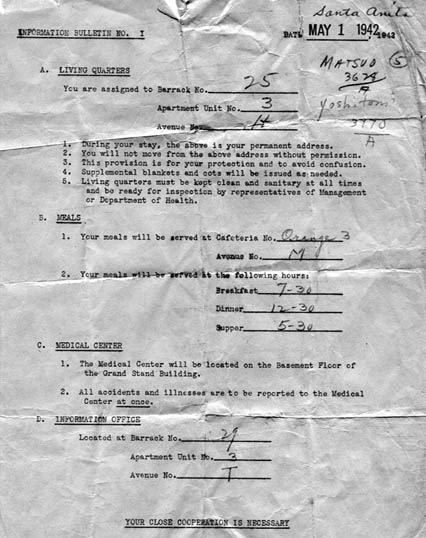
 |
|
relocation: a new home Evacuees were instructed to liquidate all personal possessions that could not be manually transported to the assembly center. This included homes and automobiles. Because they had only days to sell these valuables, many had to accept the meager prices dictated by purchasers. Some chose to risk placing their goods in government storage facilities for the duration of the war, hoping--at times in vain--that the materials would not be looted or destroyed. Japanese-Americans were also told to bring warm clothing, linens, books, and recreational materials suitable for "pioneer life." A monthly clothing credit was allotted to each person. Radios were strictly prohibited, as were certain phonograph records. |
|
|
||||||||||||||||||||||||
|
Each camp provided three meals a day for each internee as well as any necessary medical care. Alcoholic beverages were forbidden. Camps were divided into wards, blocks, barracks, and apartments. Manzanar, an average-sized camp, was divided into nine wards which housed four blocks each. Each block contained sixteen barracks, which in turn contained several apartments that were a maximum of 20 x 25 feet. Individual families of four of five often shared these spaces with other families, married couples, or single persons. Apartments were furnished with iron cots, straw mattresses and pillows, lights, and oil heaters. Each block of barracks contained dining facilities as well as wash rooms. |
 |
||||
|
"Information Bulletin No. 1" [54.3 KB] |
||||
|
This Internet publication has been made possible by a grant from The Equitable Foundation. |